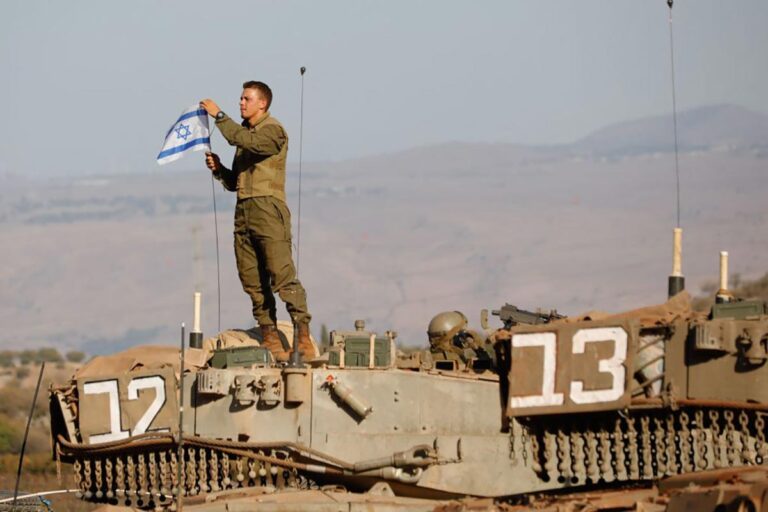
Since October 7, you have likely been inundated with terrible news pouring out of Israel and Gaza. Our Jerusalem-based correspondent Tzvi Joffre answers your FAQs about the rapidly unfolding events on the ground. Click here to read our latest stories on the war.
What happened and how did Hamas terrorists infiltrate Israel?
On Saturday, October 7, hundreds of Palestinian terrorists infiltrated into Israel on foot and with motorized paragliders while thousands of rockets were fired from Gaza into Israel.
After entering Israel, the terrorists went into towns and IDF bases, murdering and kidnapping hundreds of civilians and soldiers, including children and infants. Only after days of fighting were Israeli forces able to enter all of the towns after clearing them mostly of terrorists and bodies.
A few hours after the attack began, Israeli forces began entering the area in an attempt to rescue civilians and to fight the terrorists who had infiltrated. Simultaneously, the IDF began launching airstrikes in Gaza. Read more about Hamas’ shock attack on Israel.
How is Israel responding to the attack?
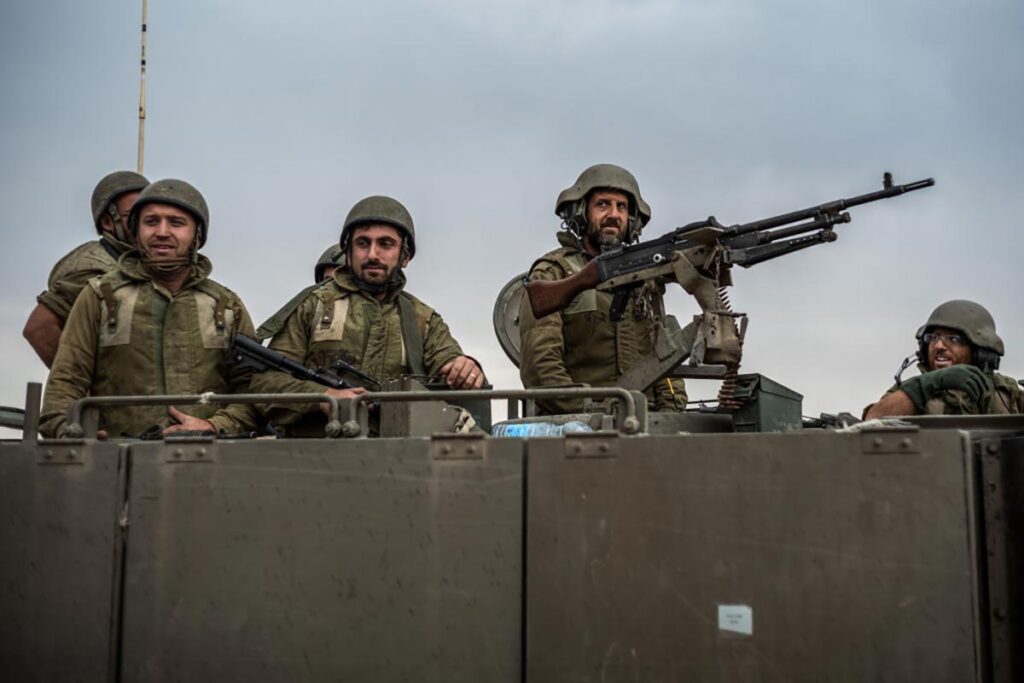
Prime Minister Benjamin Netanyahu and National Security Council head Tzachi Hanegbi, as well as other Israeli officials, have said that the country’s war goal is “destroy” Hamas and remove them from military and political control over the Gaza Strip. One of the main targets of the war is Hamas’s leader in Gaza, Yahya Sinwar.
Here’s how Israel responded. A few hours after the assault began, the Israeli Air Force began conducting airstrikes along the Gazan border and in Gaza itself to try and stop the continuing infiltration of terrorists into Israel.
In parallel, Israeli forces began making their way to communities near the Gaza border, clashing with Palestinian terrorists who were still in Israel.
Over a week after the attack, final efforts were completed to ensure that all the terrorists who infiltrated Israel had been cleared from the areas near the border.
In the days since the war began, clashes along the border became isolated, with only a few cases of encounters with terrorists in Israeli territory reported until eventually no further clashes were reported.
In mid-October, the IDF assessed that there were still Palestinian terrorists hiding in Israeli territory and waiting to commit attacks. Since mid-October, there have not been additional reports of terrorists being found in Israeli territory.
The Israeli Air Force has also continued airstrikes in Gaza against Hamas, Palestinian Islamic Jihad, and other factions in a general effort to “defang” these movements for the foreseeable future.
In late October, the IDF launched a large ground offensive in northern Gaza and within a matter of days had succeeded in surrounding Gaza City from all sides.
Since the expanded ground offensive began, the IDF has eliminated several senior Hamas commanders and destroyed many tunnels and headquarters used by the terrorist movement throughout northern Gaza. The IDF has also succeeded in rescuing one of the IDF soldiers kidnapped by Hamas on October 7.
Among the sites captured by the IDF are central government buildings used by Hamas, including the legislature and police headquarters, as well as Hamas training camps and command and control centers.
Recently, Defense Minister Yoav Gallant stated that Hamas had lost control of the Gaza Strip, with terrorists fleeing and civilians looting Hamas bases.
In the aftermath of the attack, Israel temporarily cut off water, electricity, and fuel supplies to the Gaza Strip, vowing not to restart the supplies until the estimated 200 hostages being held there have been freed.
Does Hamas use civilians as human shields?
For years, Israel, the U.S., and other Western countries have said that Hamas uses civilians in Gaza as human shields, placing military infrastructure in or right next to civilian infrastructure.
For example, the IDF and U.S. officials have said that Hamas has a central headquarters located under the Shifa Hospital, the largest hospital in Gaza.
Human rights organizations and foreign media reports have similarly said the hospital has been used by Hamas, with Amnesty International saying in 2014 that Hamas used the hospital to torture and murder alleged Palestinian collaborators.
IDF Spokesperson Daniel Hagari said recently that the IDF had found additional evidence of Hamas using Rantisi Children’s Hospital and other hospitals as “instruments of war.”
In the basement of Rantisi, the IDF found a Hamas command-and-control center, suicide-bomb vests, grenades, AK-47 assault rifles, explosive devices, RPGs, and other weapons, among other evidence.
The IDF additionally found signs that Hamas may have held hostages in the hospital and that Hamas terrorists had gone to the hospital after the October 7th massacre in order to hide.
The IDF has also published footage showing Hamas terrorists firing at Israeli forces from within the al-Quds Hospital in Gaza.
The IDF has additionally found rocket launchers, tunnels, and other military infrastructure used by Hamas in and near schools, homes, and hospitals.
UNRWA, the UN agency tasked with caring for Palestinian refugees, has also repeatedly found both rockets and tunnels in and under its schools, including in 2022, 2021, 2017, and 2014.
Is Israel going to rescue hostages in Gaza?
Israeli officials have said they are committed to bringing the hostages home, but how this will be done remains unclear. This isn’t the first time Israel has had to deal with soldiers and civilians being held captive, including in Gaza.
In 2006, IDF soldier Gilad Shalit was captured by Hamas. Hamas held Shalit in Gaza for the next five years until Israel and Hamas reached a prisoner exchange deal. In the agreement, Hamas handed back Shalit to Israel in exchange for the release of 1,027 Palestinians held in Israeli jails.
Since 2014, two Israeli civilians and the bodies of two IDF soldiers have been held captive by Hamas in Gaza. Efforts by mediators and the families of the captives to reach a prisoner swap agreement have failed in the 9 years since.
Some Israelis have advocated for Israeli forces to enter Gaza to rescue the hostages, pointing to the Entebbe rescue operation in 1976.
Others, however, note that such rescue operations haven’t always worked, including in the case of IDF soldier Nachshon Wachsman.
In 1994, when Israeli forces attempted to forcibly retrieve Wachsman, the terrorists holding him hostage killed him and another IDF soldier.
In late October, the IDF succeeded in rescuing Private Ori Megidish, one of the soldiers kidnapped by Hamas on October 7.
Hamas has also released four hostages on its own initiative, claiming that it was doing so for “humanitarian purposes.” So far, the Red Cross has not been allowed by Hamas to see or treat the hostages, some of whom suffer from chronic medical conditions.
Are Palestinians in northern Gaza able to evacuate?
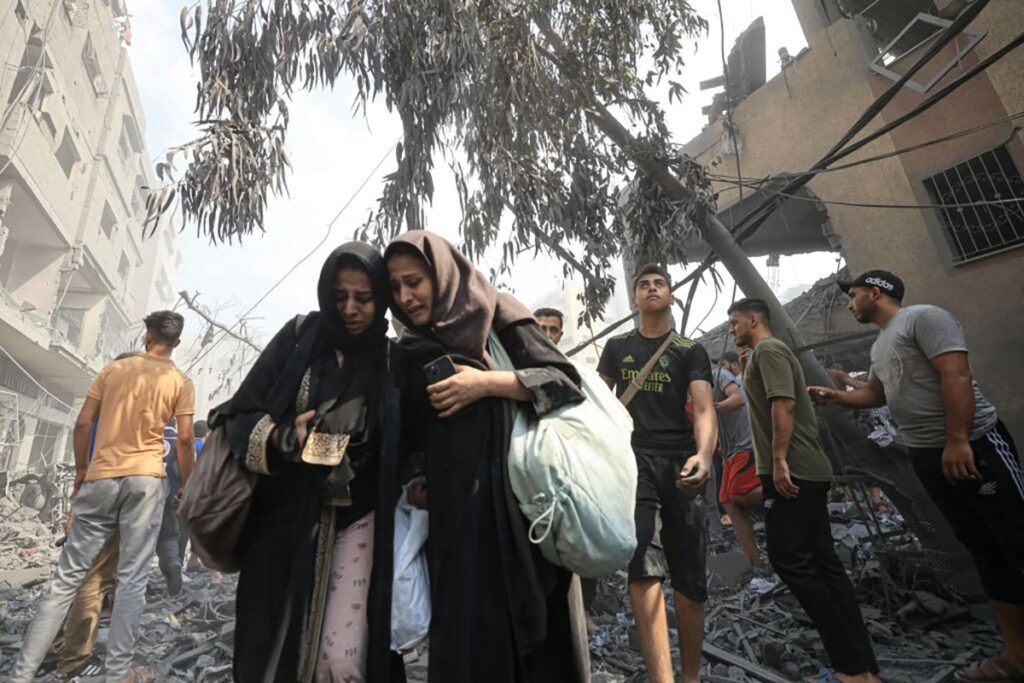
In the weeks leading up to the ground offensive, the IDF issued warnings to residents of northern Gaza, instructing them to evacuate to southern Gaza ahead of planned IDF operations in Gaza City and the northern Strip. The IDF also designated a number of roads civilians could use as evacuation routes.
IDF releases an audio recording of an officer in the Military Intelligence Directorate's Unit 504 — which specializes in HUMINT — speaking to a Gazan man, during which he describes how Hamas is preventing people from evacuating from the northern part of the Gaza Strip. pic.twitter.com/VgMJO3SzVo
— Emanuel (Mannie) Fabian (@manniefabian) October 26, 2023
After the IDF issued the warning, Hamas officials in Gaza instructed civilians to ignore the directive, calling it “false propaganda and psychological warfare.”
Despite Hamas’ statements, hundreds of thousands have fled northern Gaza since the warning was issued, with Israeli media estimating that at least 800,000 people had evacuated as of its latest update.
Alongside statements urging civilians not to evacuate, the IDF says Hamas also set up roadblocks on evacuation routes in order to block civilians from leaving. The IDF published footage which they say shows the roadblocks being set up and the traffic caused by them.
Last week, the IDF stated that Hamas terrorists had fired at IDF soldiers who were attempting to set up a road to allow civilians to evacuate from northern to southern Gaza.
Despite the attack, the IDF said it would temporarily open the road for evacuations. Since the incident, the IDF has secured evacuation routes for Gazan civilians on a nearly daily basis, with tens of thousands reportedly moving south on these routes.
Additionally, analysts have raised questions about a video shared by Palestinian media, which purportedly shows an Israeli airstrike on one of the evacuation routes.
Upon examination, these analysts noted that the explosion appeared to come from a van on the ground and not a strike from above, as there was no projectile visible at any point in the footage.
IDF spokespeople have stressed that the IDF has not targeted evacuation routes and that Hamas may have attempted to attack the evacuation routes in order to cause civilian casualties and prevent civilians from evacuating.
The IDF also published a phone call between an IDF intelligence officer and a Palestinian from Gaza, during which the Palestinian said that Hamas was preventing people from evacuating.
The caller added that Hamas was taking the ID cards and car keys of those trying to evacuate. Additional similar intercepted phone calls have been published in the past few weeks.
Is there going to be a ceasefire?
In recent weeks, pro-Palestinian protesters and several world leaders have called for an immediate ceasefire or humanitarian “pauses” in light of the humanitarian situation in Gaza.
U.N. Secretary-General António Guterres recently stated that “the unfolding catastrophe in Gaza makes the need for a humanitarian ceasefire more urgent with every passing hour.”
Guterres argued that not enough humanitarian aid was entering the Gaza Strip, as only 400 trucks had entered the Strip over a two-week period after October 7, compared to 500 per day prior to the conflict.
Israel officials have reported that around 100 trucks carrying humanitarian aid have entered Gaza on a daily basis for at least the past week, with over 900 entering the Strip since October 7.
Additionally, a number of countries, including the UAE, are preparing seven field hospitals to treat Palestinians in Gaza.
Additionally, 2,963 tons of medical equipment from several countries have entered the Strip, and a floating hospital from France is scheduled to arrive off the coast in the coming days.
The IDF has also attempted to provide some fuel and medical supplies, including incubators, to the Shifa Hospital in northern Gaza, although Hamas has prevented the hospital from accepting the fuel, according to Israeli officials. Read more about what’s happening at Shifa Hospital.
Prime Minister Benjamin Netanyahu and other Israeli officials have stressed that they will not consider any form of ceasefire until a significant number of the hostages being held by Hamas are released.
Even if a temporary ceasefire or humanitarian pause is implemented, Israeli officials have stressed that the IDF’s offensive in Gaza will continue until Hamas is eliminated.
Recently, Hamas’s al-Qassam Brigades stated that it would be willing to release 70 women and children in return for a five-day truce.
How many Israelis and Palestinians have been killed?
As of the latest update, the official death count in Israel was roughly 1,200 people. An additional 3,000 people were injured and at least 240 people have been abducted and taken hostage in Gaza.
Israel’s airstrikes on Hamas targets in the Gaza Strip in response have killed over 10,000 people and wounded 24,000 others, according to Hamas authorities. Israeli forces also killed over 1,500 Hamas terrorists who infiltrated into Israeli territory since October 7.
Who are the Americans who have been killed?
White House officials said in its last update on the matter that 32 Americans have been killed and at least 11 were missing after Hamas’ assault on Israel. According to the president, additional American citizens are likely being held hostage in Gaza.
In an emotional speech in October, President Biden condemned Hamas’ attack and brutal massacre of Israelis as an act of “pure unadulterated evil.”
The American victims of the Hamas assault who have been named include Deborah Matias and Hayim Katsman.
Other U.S. citizens, including Danielle Ben Senior, Hersh Golberg-Polin, Judith Tai and Natali Raanan, and Carmela Dan, remain unaccounted for, amid concerns that they were kidnapped by Hamas.
Has Hezbollah joined the war?
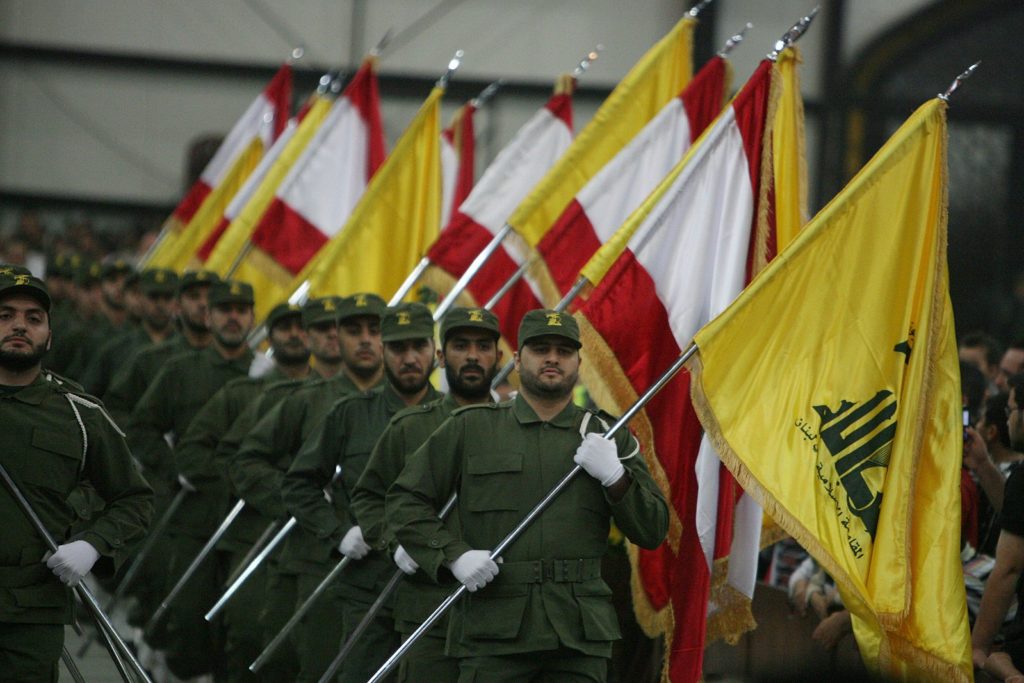
Since the day after the war began, Hezbollah has conducted a series of anti-tank missile and mortar attacks against Israel, killing two civilians and six IDF soldiers.
Read more: What is Hezbollah?
The IDF has responded to the attacks with artillery fire and airstrikes targeting Hezbollah positions in southern Lebanon, killing about 70 Hezbollah members and two journalists, according to Lebanese reports.
Hezbollah has threatened to become more involved in the conflict, with Arabic media reports indicating that Hezbollah might intensify its involvement if the IDF launches a ground operation in Gaza.
In October, Iranian Foreign Minister Hossein Amirabdollahian warned that the country’s proxies around the Middle East, which includes Hezbollah, could launch preemptive strikes on Israel “in the coming hours.”
In recent weeks, in addition to Hezbollah’s continued attacks, a number of missiles have been fired from Yemen toward Israel, seemingly by an Iran-backed group called the Houthis.
Some of the missiles were intercepted over the Red Sea by the US and Saudi Arabia, while others were intercepted by Israel closer to the coast of Eilat.
Are any other countries helping Israel?
Yes. The U.S. has sent the USS Gerald R. Ford aircraft carrier to the eastern Mediterranean to be ready to assist Israel if needed and the USS Dwight D. Eisenhower aircraft carrier headed to the Mediterranean as well.
The U.S. has been delivering military equipment to Israel as well, including many Iron Dome interceptors and batteries.
In a speech in October, President Biden said the U.S. was “surging” additional military aid to Israel. He vowed to ensure Israel has what it needs to defend itself.
Biden visited Israel and took part in a meeting of the war cabinet in mid-October and has delivered a number of speeches in the past month in support of Israel.
Also in mid-October, the U.S., Germany, the U.K., France, and Italy issued a joint statement pledging “to ensure Israel is able to defend itself.”
U.S. defense officials have also said they intend to provide further military aid to Israel and to help with planning hostage rescue efforts. Germany has also offered military support, and the U.K. said it would provide diplomatic, intelligence or security support to Israel if requested.
What happens next?
While the IDF continues its advance in northern Gaza, the international community continues to express concerns about the conflict expanding to additional fronts.
In recent weeks, Iran-backed militias have escalated attacks on both Israel and U.S. forces throughout the region.
Drone and rocket strikes have targeted bases hosting U.S. forces in Syria and Iraq and Iran-backed militias in Syria and Yemen have fired drones and missiles toward Eilat in southern Israel.
Hezbollah also continues to escalate its attacks on Israel’s northern border, with anti-tank missile attacks targeting Israeli forces and civilians on a daily basis. Palestinian factions in Lebanon have also fired rockets toward northern Israel.
In a recent conversation between Iranian Foreign Minister Hossein Amirabdollahian and his Qatari counterpart, Sheikh Mohammed bin Abdulrahman Al Thani, Amirabdollahian warned that “due to the expansion of the intensity of the war against Gaza’s civilian residents, expansion of the scope of the war has become inevitable.”
What happened at the Supernova music festival?
In the early minutes of the Hamas assault on southern Israel, hundreds of revelers were at the Supernova music festival near Re’im, east of the central Gaza Strip.
Video from the scene seemingly showed Hamas paragliders visible in the distance around the time that rockets began to be fired from Gaza overhead.
As the revelers began to try escaping from the area, Hamas terrorists arrived in the area and opened fire, killing many at the scene. Accounts from the massacre indicate that the terrorists surrounded the area and blocked roads, shooting anyone they saw.
Additional photos from the area show burned-out vehicles, some of which were seemingly hit by RPGs. In at least one other instance, civilians who were hiding in a shelter were cornered and shot at before one of the terrorists threw a grenade into the shelter, killing all inside. Footage from the scene showed that those who tried to escape were shot in the back as they ran.
At least some of the participants in the festival were seen being dragged away toward Gaza by Hamas terrorists in a brutal fashion. It is unclear if they are still alive. Over 260 bodies were recovered from the site of the festival. Read more about the horrific attack on the music festival.
What towns were affected by Hamas’ assault?
Hamas’ assault on Saturday hit over 20 towns and cities in the periphery around the Gaza border and beyond, including Sderot and Ofakim, both of which have populations of about 30,000 people.
Most of the impacted communities were kibbutzim or other types of small agricultural towns, with Sderot and Ofakim being the only large cities to be heavily infiltrated by terrorists on the ground. Many of these communities were founded around the time the state of Israel was established.
Kibbutz Be’eri, one of the towns hit worst by Hamas’ massacre, was founded in 1946. Kfar Aza, where some of the worst atrocities were reported, was founded in 1951.
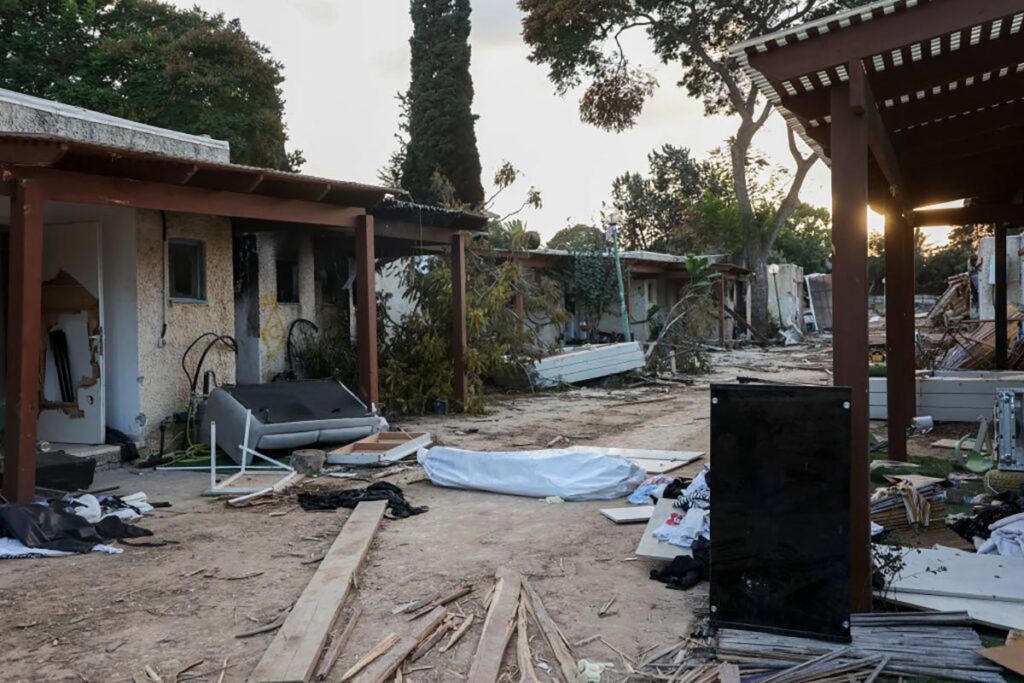
Since the establishment of the state of Israel, the area has suffered often from terrorism and rocket fire. Despite the hardships of living there, many residents have said they love the area and feel deeply connected to it. Many others have posited that having towns along the border benefits Israel’s national security.
Living in the area has also been linked to the Zionist mission of settling the Negev, as much of the area is part of the Western Negev.
How can I support Israeli soldiers and civilians amid the attacks?
There are many organizations working hard to support Israeli soldiers and civilians, ensuring that soldiers have the equipment they need and assisting victims of terrorism and those impacted by the war. Here is a list of 12 verified funds you can donate to.
If I have family or friends in Israel who I can’t get in contact with, how can I find information about them?
Israel Police have set up a Family Center for Locating Missing Persons in collaboration with the Home Front Command and the Welfare Ministry. The center is open 24/7 at HaNegev 4, Airport City, Lod, in the Lahav 433 building and can only be contacted by calling Israel Police’s 105 hotline.
Family members arriving at the center are asked to bring identification details, an item from which DNA can be extracted, and a photo of the missing person.
The U.S. Embassy in Jerusalem has a crisis intake form that family members of missing U.S. citizens can fill out in order to seek out information about missing relatives.
Most foreign nationals with relatives missing have resorted to using social media and getting help from local communities in an effort to find their loved ones. If one of the options listed above is inaccessible, a post asking for information on Instagram and Facebook may be the best option.
If I’m in Israel, what should I do?
Rocket fire from both the Gaza Strip and Lebanon is continuing. If you’re in Israel, make sure to stay updated on Home Front Command guidelines and to download a red alert app such as the Home Front Command’s app on your phone (for iPhone or Android).
Depending on where you are in the country, you have a different amount of time to get to a shelter. The Home Front Command’s app will tell you how much time you have in your location. Walk in an orderly fashion to the nearest shelter as many injuries during wartime are caused by panicking and running on the way to a shelter.
After entering a shelter, stay inside for at least 10 minutes after the sirens stop. If there is no shelter, find a stairwell or interior room without windows to shelter in.
If you’re outside during a siren and cannot reach a shelter or building in time, lie on the ground and cover your head with your hands. If you are in a vehicle, stop on the side of the road, get out, and either find shelter or move away from your vehicle and lie on the ground.
The latest Home Front Command guidelines can be found here.
For foreign nationals wishing to leave the country, many airlines have suspended flights to and from Israel. Some countries are conducting rescue flights and El Al is still flying as well. Foreign nationals should contact the relevant embassy if they are looking for a way to exit the country.
What is Hamas?
Recognized as a terrorist organization by the majority of the world including the U.S., Canada and the European Union, Hamas is a fundamentalist Islamic resistance movement that aims to destroy Israel (and its people) in order to create an independent Islamic state.
The terror group was behind a wave of devastating suicide bombings and other activities in the 1990s and 2000s. More recently, Hamas has launched thousands of rockets at Israel, dug attack tunnels in order to infiltrate Israeli communities, and inspired countless lone-wolf attacks on Israeli soldiers and civilians.
Hamas took control of the Gaza Strip soon after Israel withdrew from the area in 2005, conducting a bloody coup to oust Fatah officials in 2006. Today, it governs over 2 million Palestinians with a fundamentalist form of religious doctrine.
In its continual attack on Israel, Hamas has committed unspeakable atrocities against civilians, killing babies, women, children and families, many in barbaric ways, and raping and abusing women.
The group has long celebrated anyone who commits a suicidal act in order to harm Jews as a “shahid” or a martyr. The group rewards each shahid’s death, showering their families with monetary funds and status.
What is Hezbollah?
On Wednesday, Hezbollah launched anti-tank guided missiles at an Israeli army post on the northern border. Rockets have also been launched from Lebanon at Israel since the beginning of the war. In response, the IDF carried out strikes on Hezbollah posts in Lebanon.
Formed in 1982, Hezbollah is a terrorist organization based in Lebanon with ties to Iran and Syria. The group’s primary objective, as voiced by its leader Hassan Nasrallah, is to eradicate Israel, which he referred to as a “cancerous tumor.”
Hezbollah has orchestrated several devastating attacks against Jews worldwide, including a bus bombing targeting Israeli tourists in Bulgaria and a strike on a Jewish community center in Buenos Aires, claiming 85 lives.
Supported by Iran with more than $700 million per year, Hezbollah’s first manifesto, released in 1985, called for the establishment of an Islamic Republic in Lebanon and stated: “Our struggle will end only when this entity [the state of Israel] is obliterated.”
Despite its terrorist activities, Hezbollah has attempted to rebrand itself as a political party, offering social services to its constituents including infrastructure, healthcare, and education, earning substantial support from Lebanon’s Shiite community.
The U.S., Canada, the United Kingdom, Germany, the Arab League, Israel and many other countries consider Hezbollah to be a terrorist organization, while the European Union only designates its military wing as a terrorist group.
What is Palestinian Islamic Jihad?
The Palestinian Islamic Jihad terror group claimed responsibility for striking several Israeli areas near the Lebanese border on Monday. PIJ was formed in 1981 as an offshoot of the Muslim Brotherhood. The terrorist movement is active in Gaza, the West Bank, Lebanon, and Syria and is tightly linked to Iran.
Like Hamas and Hezbollah, the PIJ’s stated aim is the destruction of the State of Israel. The terrorist movement has conducted many terrorist attacks, including suicide bombings, in Israel. In the past year, the IDF has conducted two preemptive campaigns in Gaza focused on the PIJ: Operation Breaking Dawn and Operation Shield and Arrow.
Originally Published Nov 10, 2023 10:36AM EST
